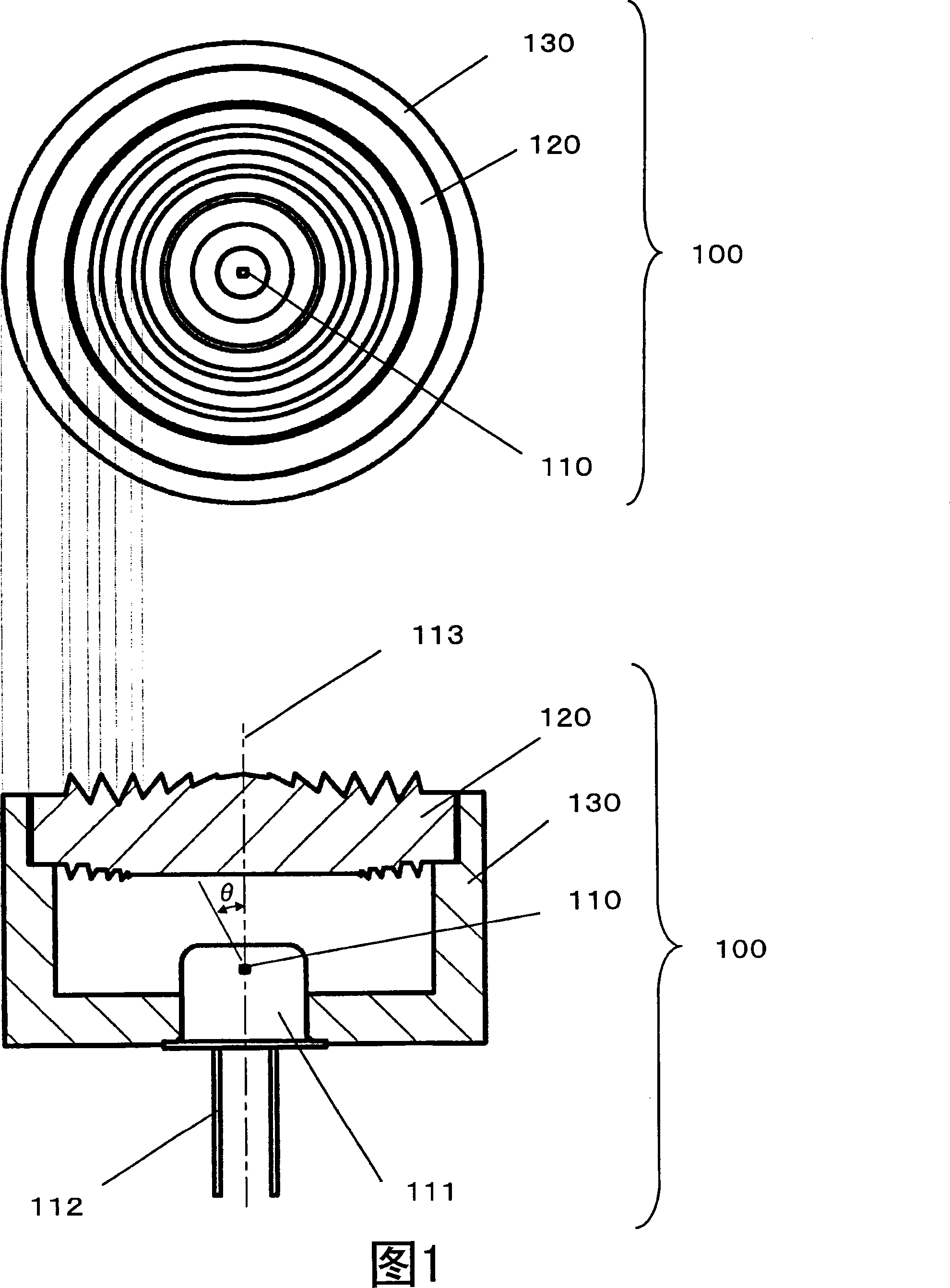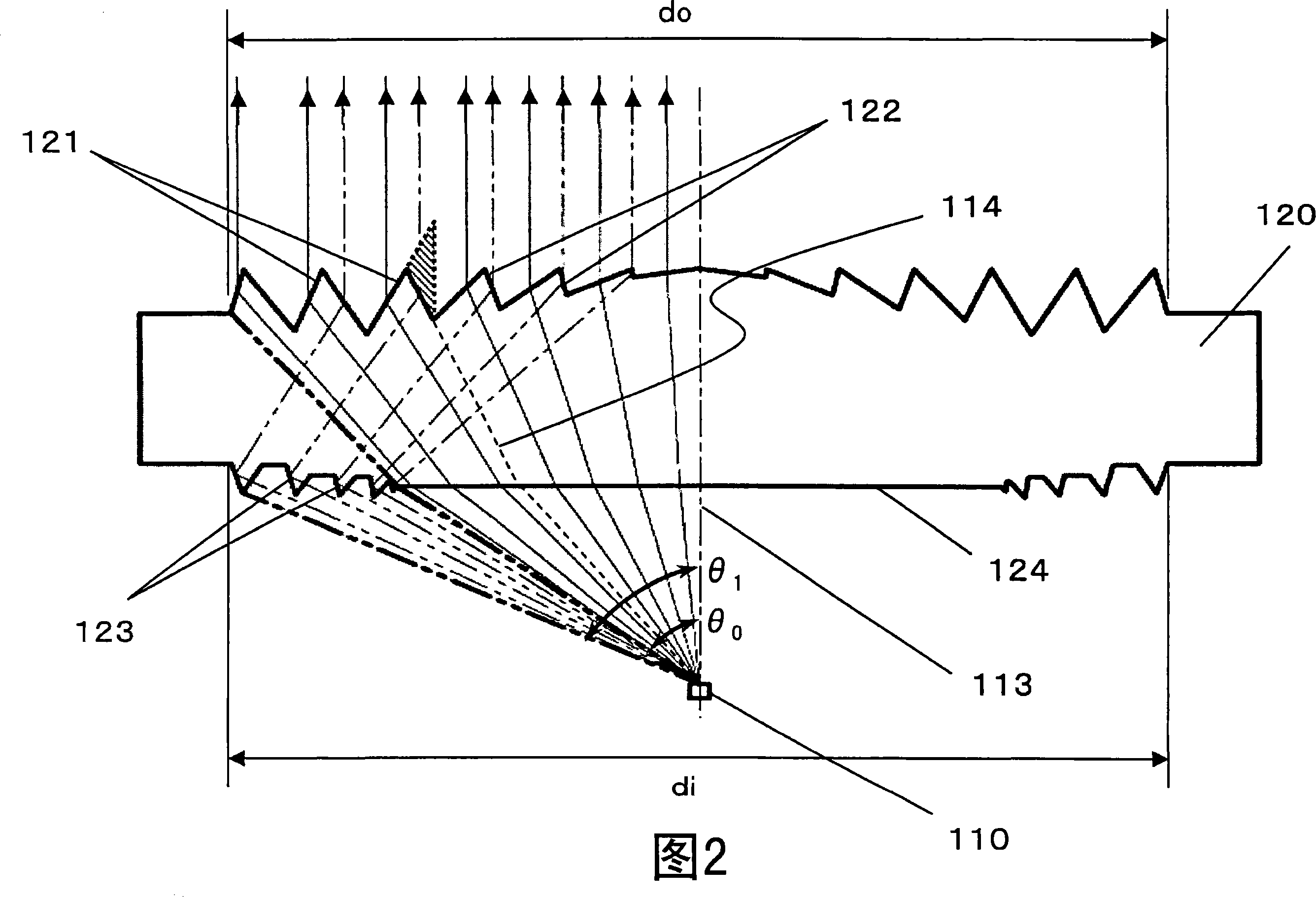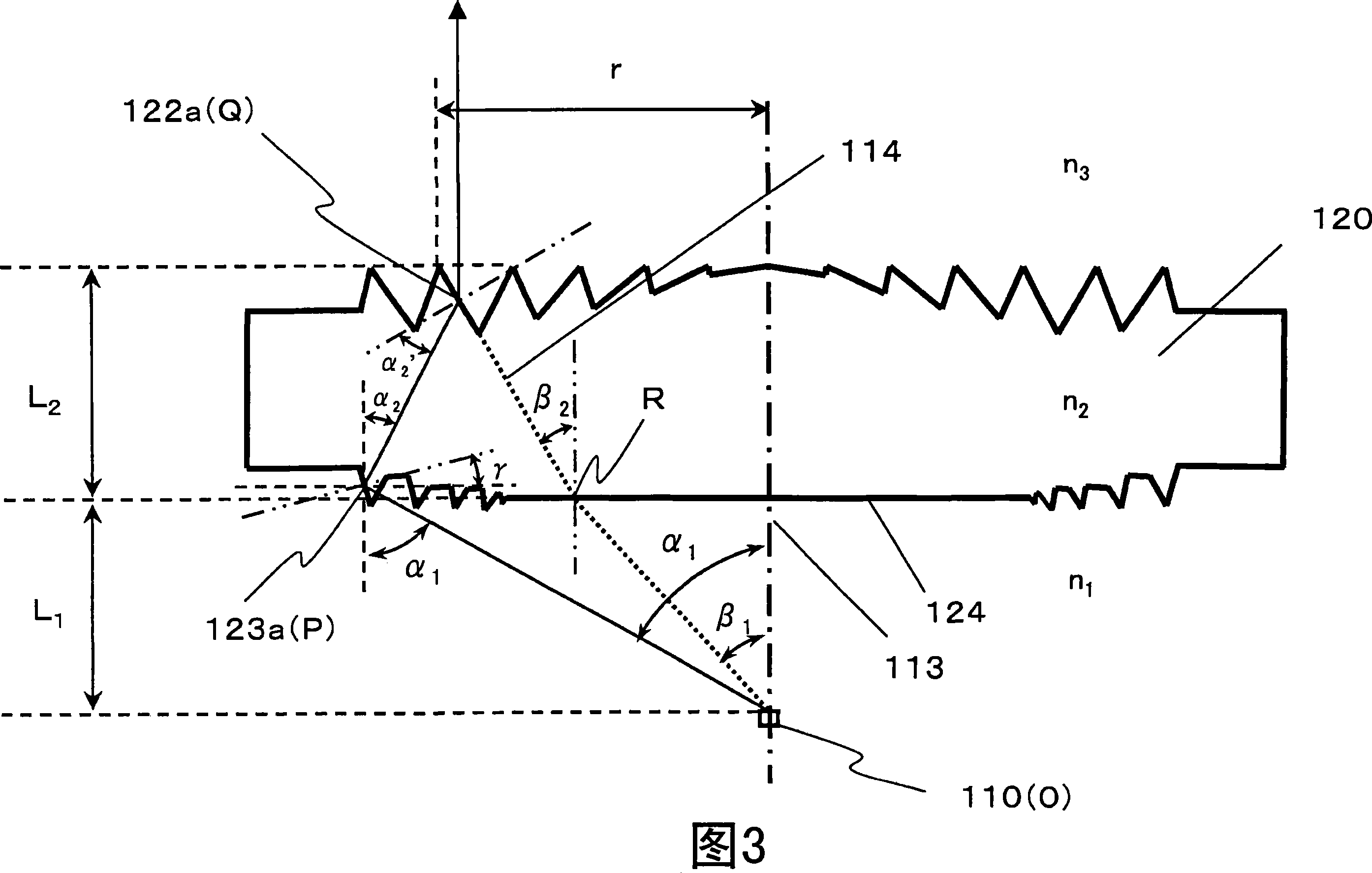Light emitting module and light receiving module
A technology of light emitting module and light receiving module, applied in optics, optical elements, lenses, etc., can solve the problems of reduced light collection efficiency and inability to collect incident light, and achieve the effect of improving light collection efficiency and efficiency
- Summary
- Abstract
- Description
- Claims
- Application Information
AI Technical Summary
Problems solved by technology
Method used
Image
Examples
no. 1 example
[0066] FIG. 1 is a top view and a side sectional view of a light emitting module 100 according to a first embodiment of the present invention. FIG. 2 is a side sectional view of main parts of a light emitting module 100 according to a first embodiment of the present invention.
[0067] As shown in FIGS. 1 and 2 , the light emitting module 100 mainly includes a light source 110 and a lens element 120 . As the light source 110, for example, an LED or a semiconductor laser is used. The light source 110 is housed in a package 111 . Inside the housing 130, the package 111 and the lens element 120 are fixed at positions capable of satisfying a predetermined positional relationship therebetween. The modulated electrical signal is provided via terminal 112 to light source 110 , which emits an optical signal, for example, whose luminous intensity varies according to the modulation signal, such that the optical signal spreads out from an optical axis 113 . For example, when an LED is...
no. 2 example
[0099] In the first embodiment, using the slave light source at θ 0 to theta 1 The emitted light at an emission angle within a range of reduces brightness variation of the emitted light, thereby realizing a light emission module with high-efficiency performance, wherein the emission angle refers to an angle between an optical axis and an emission direction. According to a second embodiment, light emitted by the light source that does not directly reach the lens element is utilized, instead of coming from the light source at θ 0 to theta 1 Light emitted at an emission angle within a range of , wherein the emission angle refers to the angle between the optical axis and the emission direction.
[0100] FIG. 10 is a top view of a light emitting module 600 according to the second embodiment of the present invention, and FIG. 11 is a side cross-sectional view of the light emitting module 600 according to the second embodiment of the present invention. FIG. 12 is a side sectional ...
no. 3 example
[0111]FIG. 19 is a top view and a side sectional view of a light receiving module 2100 according to a third embodiment of the present invention. FIG. 20 is a side sectional view of main parts of a light receiving module 2100 according to a third embodiment of the present invention.
[0112] As shown in FIGS. 19 and 20 , the light receiving module 2100 mainly includes a light receiving element 2110 and a lens element 2120 . For example, a photodiode (PD) can be employed as the light receiving element 2110 . The light receiving element 2110 is housed in a package 2111 . Inside the housing 2130, the package 2111 and the lens element 2120 are fixed at positions capable of satisfying a predetermined positional relationship therebetween. The optical receiving module 2100 receives an optical signal (for example, an optical signal transmitted by the optical transmitting module 100 of the first embodiment) from a wireless optical transmitter (not shown), which is arranged to face the...
PUM
 Login to View More
Login to View More Abstract
Description
Claims
Application Information
 Login to View More
Login to View More - R&D
- Intellectual Property
- Life Sciences
- Materials
- Tech Scout
- Unparalleled Data Quality
- Higher Quality Content
- 60% Fewer Hallucinations
Browse by: Latest US Patents, China's latest patents, Technical Efficacy Thesaurus, Application Domain, Technology Topic, Popular Technical Reports.
© 2025 PatSnap. All rights reserved.Legal|Privacy policy|Modern Slavery Act Transparency Statement|Sitemap|About US| Contact US: help@patsnap.com



